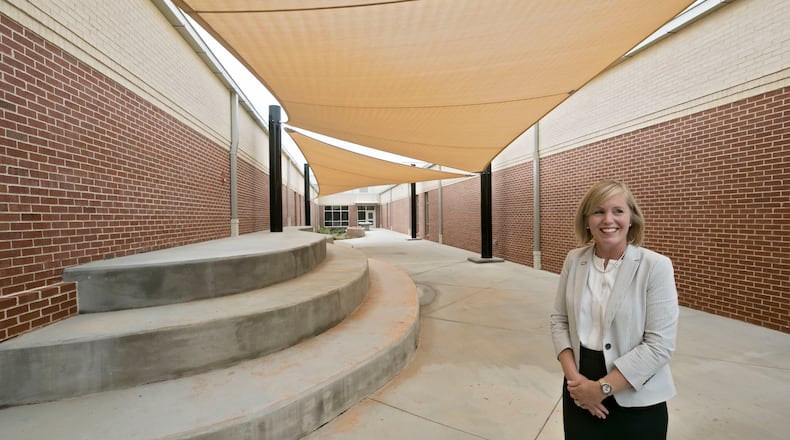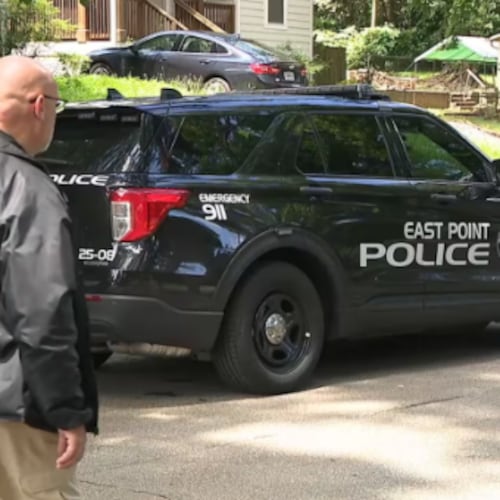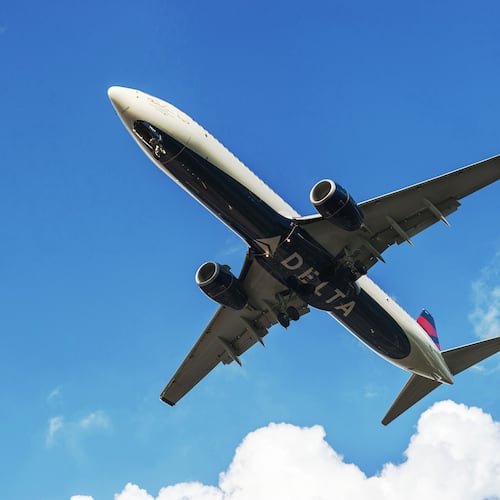The coronavirus may solve an issue in education that has raged for decades but never been settled: how to lower class sizes.
In an effort to follow social distancing guidelines, school systems across metro Atlanta are considering various plans for the 2020-2021 academic year that could include dividing students into groups that would make classes smaller.
That strategy — one of three being considered — would involve having students attend school morning and afternoon shifts or on alternate days. The arrangement would allow for smaller classes where desks can be placed several feet apart and give teachers enough room to maneuver between them without coming too close to students.
“We don’t know yet what the best model is or what’s feasible or what’s reasonable,” said Jen Brock, a spokeswoman for Marietta City Schools. “We’re trying to think of every scenario to think of what works best.”
That includes following a traditional school day with accommodations for social distancing, or continuing the virtual education put in place after schools were closed in March to stem the virus’ spread. Or it could be a hybrid of both.
It’s a scene playing out across the nation and around the world as educators weigh how to keep schools safe in a pandemic. The issues to consider are numerous. Among the questions: how can students change classes without flooding hallways at the same time? How can they practice social distancing during recess or physical education? Would more school buses be needed to ensure students sit apart?
In Washington, D.C., the mayor’s office is recommending class sizes of no more than 10, including the teacher. In Miami, the superintendent of schools has said students will eat in classrooms instead of the cafeteria. In Denmark, youngsters will play “shadow tag,” a variation on tag where the goal is to touch a competitors shadow, not a person.
“I think we’re all going to have be prepared to be flexible to go from one thing to another as we see the ramifications of this virus,” Joyce Many, senior associate dean of undergraduate studies and educator preparation at Georgia State University.
Adding to the uncertainty is the evolving health guidance. For instance, the Centers for Disease Control and Prevention this past week said the virus does not spread as easily from contaminated surfaces as previously thought.
The situation has kept school leaders in hours of planning meetings, which they expect to intensify as the new academic year approaches. They are receiving input from the state departments of education and public health, county and city officials, parents, rank-and-file staff and even students.
“It won’t be just Dr. Barrow’s model or the district office model,” Fayette County Schools Superintendent Jody Barrow said of community buy-in during a board of education meeting on Monday. “It’s going to be a community-based model.”
Fulton Schools Superintendent Mike Looney had a similar sentiment at a board of education workshop earlier this month.
“We are going to be nimble enough to adjust to social distancing guidelines based on where we are in August, assuming we go back to face-to-face instruction,” Fulton Schools Superintendent Mike Looney said earlier this month during a county board of education workshop.
The American Federation of Teachers, a union representing 1.7 million educators, said in guidelines it has handed down that school systems should reduce class sizes, split schedules and stagger meal times to make education safe.
“Class sizes of 25 or more students in a small classroom pose obvious risks to student health and safety,” the union said in its recommendations. “Class sizes of 12-15 students will, in most circumstances, make it possible to maintain physical distancing protocols.”
Others said no solution is risk free. Following a traditional school day runs the prospect of students infecting large numbers of their classmates, but at-home learning may leave kids unsupervised in households where parents can’t work from home. Splitting students in groups may make classes smaller, but it doesn’t eliminate the possibility of the virus being passed along on lockers, door knobs, water fountains and on school buses.
In addition, school systems also could run up against budget cuts that could result in furloughs or layoffs because of high employment caused by COVID-19, adding more difficulty to finding solutions.
“The only thing that is certain at this point is that things are going to change,” Gwinnett Public Schools spokeswoman Sloan Roach said.
Those who advocate for smaller classes said the change in size may look good on paper, but it still leaves much to be desired. For instance, teachers will still be educating the same number of students, just in a different configuration. And alternating when students are in class gives teachers less time to bond with students, a key benefit of small classes where educators have more flexibility to try different teaching methods.
“The primary challenge with social distancing is that learning is more than academic experiences, sitting still or standing still six feet apart,” said Henry County Schools Superintendent Mary Elizabeth Davis. “Learning is based on relationships and rapport and a focus of connectivity. Eliminating the aspect of on-campus learning is actually a bigger challenge than measuring how to put children and employees six feet away from each other.”
Dennis Attick, assistant dean of school of education at Clayton State University, agreed. He said trying to satisfy so many constituencies could make it more difficult for teachers to educate because they would be tasked with knowing who is supposed to be where on what specific days.
“Reopening in this modified way is an enormous challenge,” he said. “Yes, it’s going to reduce class sizes, but I don’t think in any way any of us ever intended. And I don’t know if it’s in a way that is beneficial.”
About the Author
Keep Reading
The Latest
Featured



